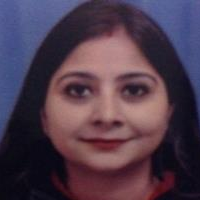International Journal of Engineering and Manufacturing (IJEM)
IJEM Vol. 6, No. 1, 8 Jan. 2016
Cover page and Table of Contents: PDF (size: 419KB)
Comparison of OFDM System in Terms of BER using Different Transform and Channel Coding
Full Text (PDF, 419KB), PP.28-34
Views: 0 Downloads: 0
Author(s)
Index Terms
MATLAB, Transform, Channel coding, wireless LAN, Multicarrier
Abstract
Orthogonal frequency division multiplexing is a type of multicarrier modulation technique which is used in wireless communication. OFDM can be used in various wireless and wired application such Digital audio broadcasting, digital video broadcasting & wireless LAN. The Performance of OFDM system depends on various parameters such as using different transform, different modulation and by putting various channel coding. In this paper OFDM system is modeled by using different transform (DWT/FFT), different modulation (BPSK, QPSK, QAM) and different channel coding (Linear / Cyclic block codes) for AWGN channel. The performance parameter is calculated as Bit error rate (BER) for various transform/modulation/channel coding based OFDM systems. MATLAB Simulink tool is used to calculate the bit error rate (BER).
Cite This Paper
Pratima Manhas, M.K Soni,"Comparison of OFDM System in Terms of BER using Different Transform and Channel Coding", International Journal of Engineering and Manufacturing(IJEM), Vol.6, No.1, pp.28-34, 2016. DOI: 10.5815/ijem.2016.01.03
Reference
[1] Nee, Richard van, and Ramjee Prasad. OFDM for wireless multimedia communications. Artech House, Inc., 2000.
[2] Heiskala, Juha, and John Terry Ph D. OFDM wireless LANs: A theoretical and practical guide. Sams, 2001.
[3] Prasad, Ramjee. OFDM for wireless communications systems. Artech House, 2004.
[4] Joshi, Alok, and Davinder S. Saini. "Performance analysis of coded OFDM for various modulation Schemes in 802.11 a based digital broadcast applications." Information Processing and Management. Springer Berlin Heidelberg, 2010. 60-64.
[5] Jiang, Tao, and Yiyan Wu. "An overview: peak-to-average power ratio reduction techniques for OFDM signals." IEEE transactions on broadcasting 54.2 (2008): 257.
[6] Islam, Mohammed Safiqul, Gouri Rani Barai, and Atiq Mahmood. "Performance analysis of different modulation schemes using OFDM techniques in Rayleigh fading channel." International journal of fundamental Physical sciences 1.1 (2011): 22-27.
[7] Babu, A. Sudhir, and Dr KV Sambasiva Rao. "Evaluation of BER for AWGN, Rayleigh and Rician fading channels under various modulation schemes." International Journal of Computer Applications 26.9 (2011).
[8] Nasir Salh Almisbah, Elessaid S Saad. "Analysis of Intercarrier Interference Cancellation Scheme in OFDM Systems." Communication engineering & application journal, iaes (2012).
[9] Filbert Hilman Juwono, Randy S. Putra, Dadang Gunawan," A Study on Peak-to-Average Power Ratio in DWT-OFDM Systems",iaes (Vol 12, No 5: May 2014).
[10] Lu, Bao-Liang, Xiaodong Wang, and Ye Geoffrey Li. "Iterative receivers for space-time block-coded OFDM systems in dispersive fading channels." Wireless Communications, IEEE Transactions on 1.2 (2002): 213-225.
[11] Molisch, Andreas F., Aarne Mammela, and Desmond P. Taylor. Wideband wireless digital communication. Prentice hall PTR, 2000.
[12] Hwang, Taewon, et al. "OFDM and its wireless applications: a survey." Vehicular Technology, IEEE Transactions on 58.4 (2009): 1673-1694.
[13] Heiskala, Juha, and John Terry Ph D. OFDM wireless LANs: A theoretical and practical guide. Sams, 2001.
[14] Rong, Yue, Sergiy Vorobyov, and Alex B. Gershman. "Linear block precoding for OFDM systems based on maximization of mean cutoff rate." Signal Processing, IEEE Transactions on 53.12 (2005): 4691-4696.
[15] Debbah, Mérouane. "Short introduction to OFDM." White Paper, Mobile Communications Group, Institut Eurecom (2004).
[16] Daoud, Omar, and Omar Alani. "Peak-to-average power ratio reduction technique for MIMO/OFDM systems." International Journal of Mobile Communications 7.6 (2009): 632-645.
[17] Sanjiv Kumar" BER Analysis of OFDM Digital Communication Systems with Improved ICI Cancellation Technique,IJISA,Vol 6, No. 4,2014,pp. 56-62.
[18] Sanjiv Kumar, P. K. Gupta, G. Singh and D. S. Chauhan, "Performance analysis of Rayleigh and Rician fading channel models using Matlab simulation" IJISA, vol. 5, no. 09, 2013, pp. 94-102.

